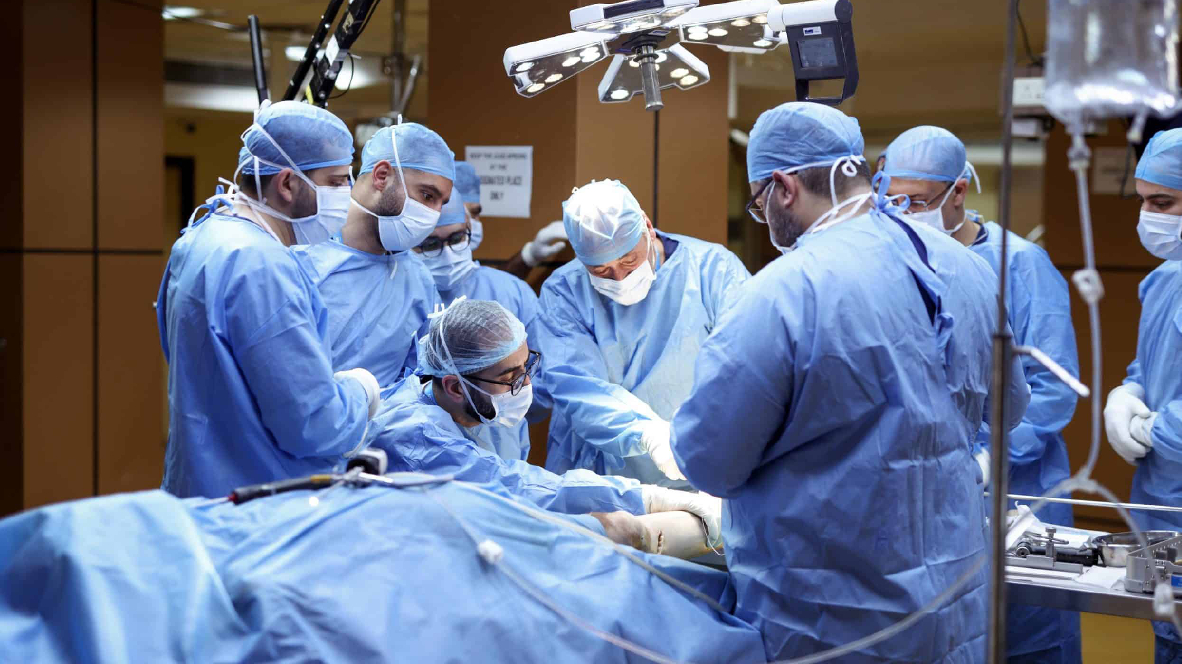
Advanced arthroscopy is a cutting-edge, minimally invasive surgical technique used to diagnose and treat joint problems, allowing orthopedic surgeons to address a wide range of issues with reduced patient recovery time and less tissue damage compared to traditional surgery. It involves the use of an arthroscope (a small, tube-like instrument equipped with a camera) that is inserted into the joint through tiny incisions, providing real-time visuals of the joint’s internal structures on a monitor. Specialized surgical tools are then used to perform necessary procedures.
Here’s an in-depth look at advanced arthroscopy services:
Key Areas of Advanced Arthroscopy
Knee Arthroscopy:
- Common Conditions Treated:
- Torn meniscus
- ACL (Anterior Cruciate Ligament) injuries
- Loose cartilage or bone fragments
- Cartilage damage and repair
- Knee inflammation (synovitis)
- Advanced Techniques:
- All-inside ACL reconstruction
- Meniscal root repair
- Cartilage restoration procedures like microfracture surgery or chondroplasty
- Biologic treatments (e.g., platelet-rich plasma)
- Benefits: Shorter hospital stay, less scarring, faster return to activity.
- Common Conditions Treated:
Shoulder Arthroscopy:
- Common Conditions Treated:
- Rotator cuff tears
- Shoulder impingement syndrome
- Labral (SLAP) tears
- Frozen shoulder (adhesive capsulitis)
- Biceps tendonitis or tears
- Advanced Techniques:
- Arthroscopic rotator cuff repair
- Bankart repair for shoulder instability
- Biceps tenodesis (repositioning of the biceps tendon)
- Benefits: Precision in repairing soft tissues, shorter recovery time, improved shoulder mobility.
- Common Conditions Treated:
Hip Arthroscopy:
- Common Conditions Treated:
- Femoroacetabular impingement (FAI)
- Labral tears
- Hip dysplasia
- Synovitis
- Hip cartilage damage
- Advanced Techniques:
- Labral repair and reconstruction
- Arthroscopic femoroplasty and acetabuloplasty for reshaping bone structures
- Cartilage restoration techniques
- Benefits: Prevents further damage, reduces need for open surgery, improved hip function and movement.
- Common Conditions Treated:
Ankle Arthroscopy:
- Common Conditions Treated:
- Ankle impingement
- Loose bone fragments
- Ligament repair (e.g., ankle sprains)
- Osteochondral defects (cartilage and bone damage)
- Advanced Techniques:
- Minimally invasive ligament reconstructions
- Cartilage repair or replacement
- Treatment of chronic ankle instability
- Benefits: Faster recovery, less post-operative pain, early return to sports or activities.
- Common Conditions Treated:
Elbow Arthroscopy:
- Common Conditions Treated:
- Tennis elbow (lateral epicondylitis)
- Elbow stiffness or locking (due to loose bodies)
- Elbow arthritis
- Ligament reconstruction (Tommy John surgery)
- Advanced Techniques:
- Ulnar collateral ligament (UCL) repair or reconstruction
- Loose body removal
- Treatment of osteoarthritis or post-traumatic arthritis
- Benefits: Smaller incisions, less scarring, more accurate joint repair.
- Common Conditions Treated:
Wrist Arthroscopy:
- Common Conditions Treated:
- Wrist ligament injuries (e.g., scapholunate ligament tears)
- Wrist fractures
- Ganglion cysts
- Wrist arthritis
- Advanced Techniques:
- Ligament reconstruction
- Debridement (removal of damaged tissue)
- Removal of ganglion cysts using minimally invasive techniques
- Benefits: Precise repair of small, complex joint structures, less recovery time, and less post-operative stiffness.
- Common Conditions Treated:
Innovative Techniques in Advanced Arthroscopy
Biologic Augmentation:
- Description: The use of biologic agents like platelet-rich plasma (PRP) or stem cells to promote faster healing.
- Use: Helps in cases where tissue repair is challenging (e.g., rotator cuff repairs, cartilage damage).
- Benefit: Enhanced tissue regeneration and reduced recovery time.
Robotic-Assisted Arthroscopy:
- Description: Surgeons use robotic systems to guide tools with high precision during the procedure.
- Use: Mostly in knee and hip arthroscopy.
- Benefit: Greater accuracy, leading to better long-term results and reduced risk of complications.
3D Imaging and Preoperative Planning:
- Description: Surgeons use advanced imaging tools like 3D MRI and CT scans for better preoperative planning.
- Use: Allows for more precise visualization of joint abnormalities before the surgery.
- Benefit: Better outcomes due to more tailored and accurate surgical interventions.
Cartilage Restoration Procedures:
- Description: Techniques to repair or replace damaged cartilage, such as microfracture surgery, osteochondral autograft transplantation (OATS), or matrix-induced autologous chondrocyte implantation (MACI).
- Use: Common in treating cartilage injuries in the knee, shoulder, or hip.
- Benefit: Prevention of arthritis, improved joint function, and long-term joint preservation.
Benefits of Advanced Arthroscopy
- Minimally Invasive: Reduces the need for large incisions, which leads to faster recovery and less pain.
- Less Scarring: Small incisions lead to minimal scarring compared to traditional open surgeries.
- Lower Risk of Infection: Due to the smaller incisions and controlled environment, the risk of infection is reduced.
- Faster Recovery: Most arthroscopic procedures have quicker recovery times than open surgery, allowing patients to return to daily activities and sports sooner.
- Outpatient Procedure: Many arthroscopic surgeries are performed on an outpatient basis, so patients can go home the same day.
- Precision: The magnified view provided by the arthroscope allows surgeons to perform more precise surgeries, especially on delicate structures like ligaments, tendons, and cartilage.
Conditions Best Treated with Advanced Arthroscopy
- Sports injuries (ACL, meniscus tears, shoulder dislocations)
- Degenerative joint diseases (arthritis, cartilage wear and tear)
- Joint inflammation and infections
- Soft tissue tears and damage (ligaments, tendons)
- Joint stiffness or “locking” from loose fragments
Recovery After Arthroscopy
Recovery times depend on the type of procedure and the joint involved. Most patients are advised to start physical therapy soon after surgery to help restore joint strength and flexibility. Full recovery may take several weeks to months, depending on the complexity of the procedure. However, because of the minimally invasive nature, most patients experience less post-operative pain, reduced reliance on pain medication, and a quicker return to normal activities.
